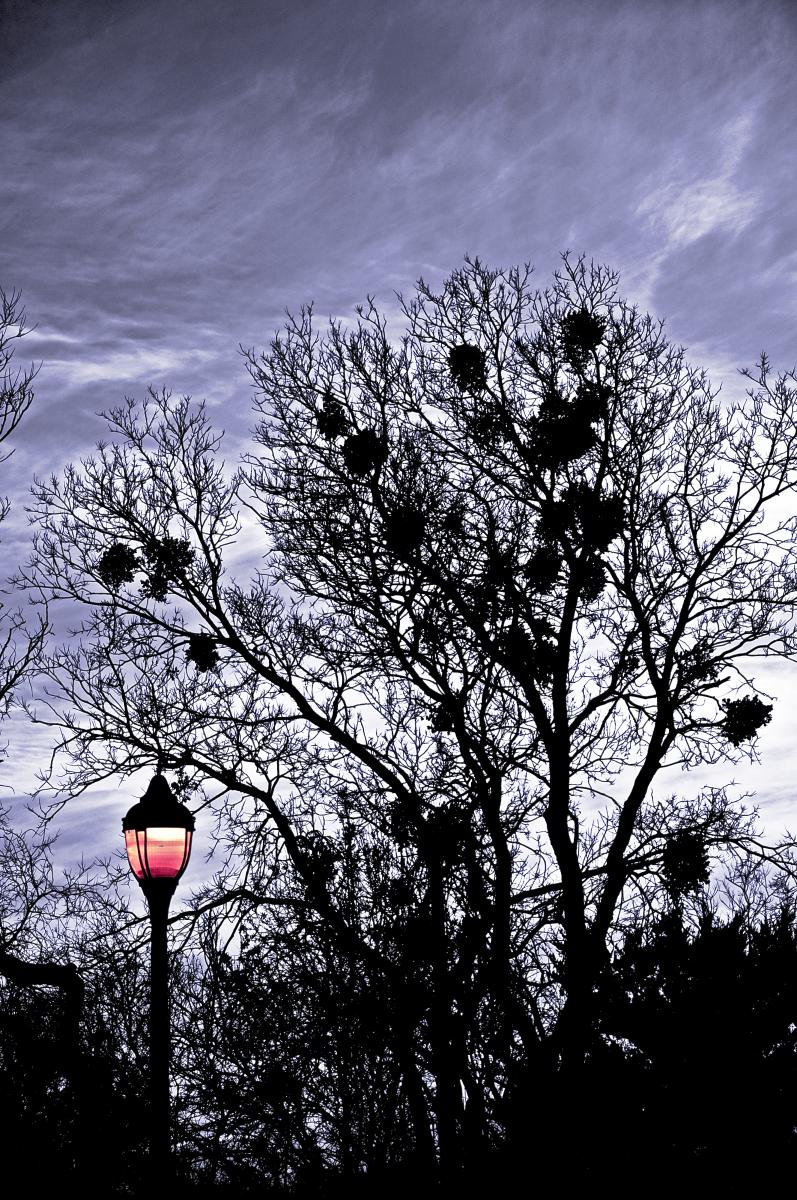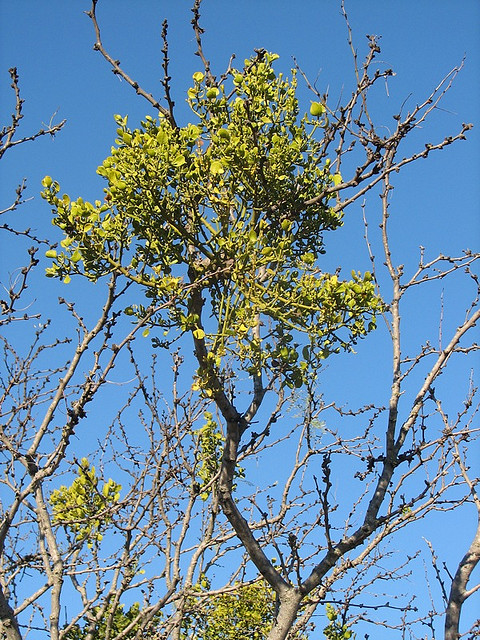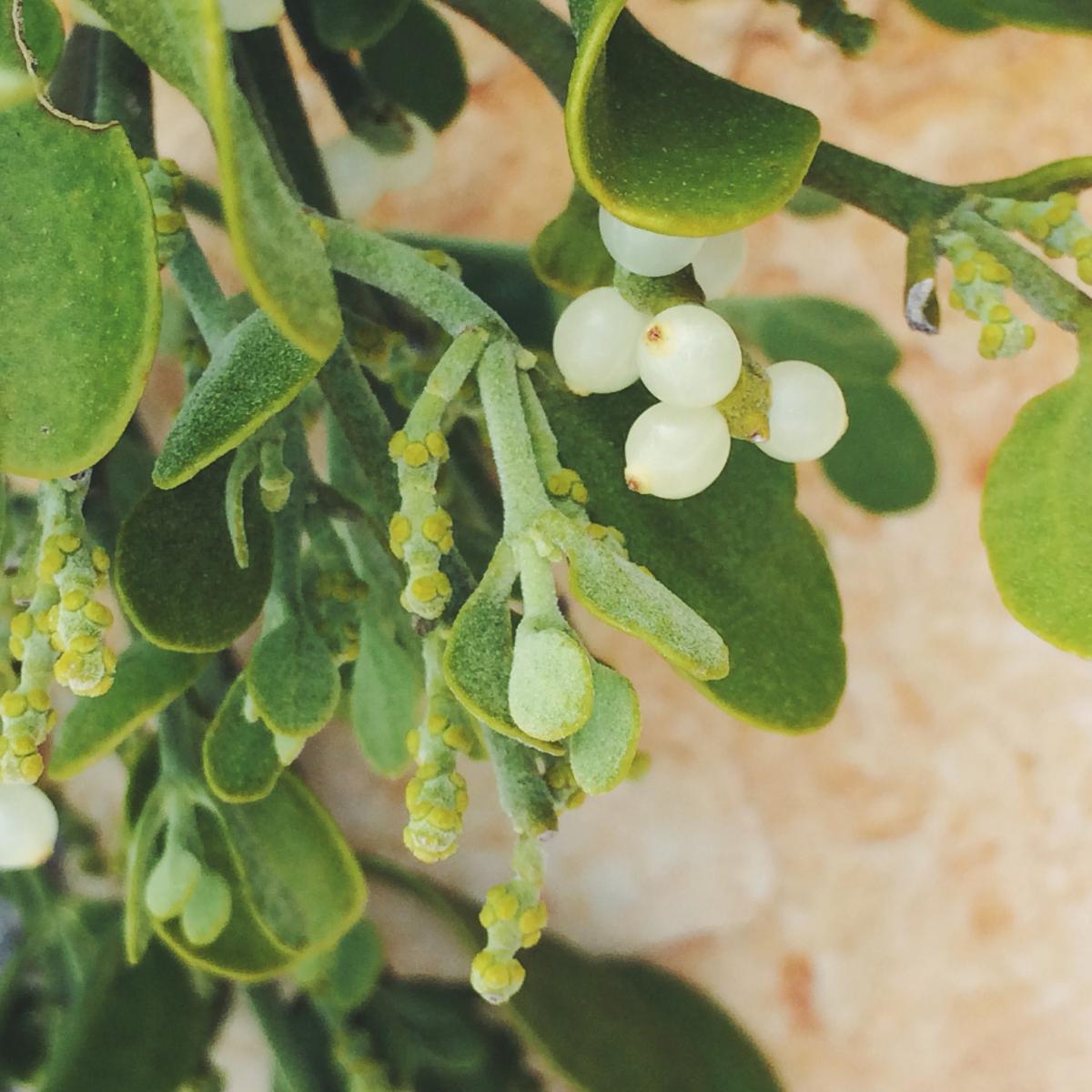Mistletoe



Photo Credit: Ron Guest (top), and designatednaphour (bottom)
As temperatures drop and leaves fall, you may notice tufts of green which remain in the crowns of some trees. It is likely that these green tufts are not actually part of the tree at all, but are a completely different plant, mistletoe. Birds feed on the berries produced by the plant, and spread the seeds to other trees. Many tree species are hosts for mistletoe, but it is especially common in hackberries and cedar elms, here in Central Texas.

Photo Credit: philhearing on Flickr
The tradition of kissing under mistletoe is thought to have begun with the ancient Greeks. Since mistletoe remains green year-round, it has long been associated with fertility. Many cultures have myths related to this, and have adopted rituals including mistletoe for weddings and holiday celebrations.

As romantic as this may seem, mistletoe has a bit of a dark side. It is a parasite, meaning it lives off of the resources of a host, in this case, trees. It absorbs water and nutrients from tree branches on which it is rooted. In addition to robbing its host of resources, it weakens the wood in the areas where it has taken root, which can lead to broken branches. Heavy infestations of mistletoe can even kill a tree. For this reason, it is a good idea to consult a qualified arborist if you are concerned about mistletoe in your trees.
For more information on mistletoe, check out the Texas A&M Forest Service's page on Mistletoe and the Aggie Horticulture page on tree parasites.
Don't confuse mistletoe for ball moss! Learn more about this friendly, though often enthusiastic, tree friend. Visit Ball Moss - Just Hanging Out to learn more.
Article submitted by Lara Schuman, former Forestry Program Manager and Certified Arborist.
This information is sponsored by the City of Austin. Learn more about trees and resources at the Tree Information Center!

Join us on social @NatureCityATX, where we're cultivating connections!


